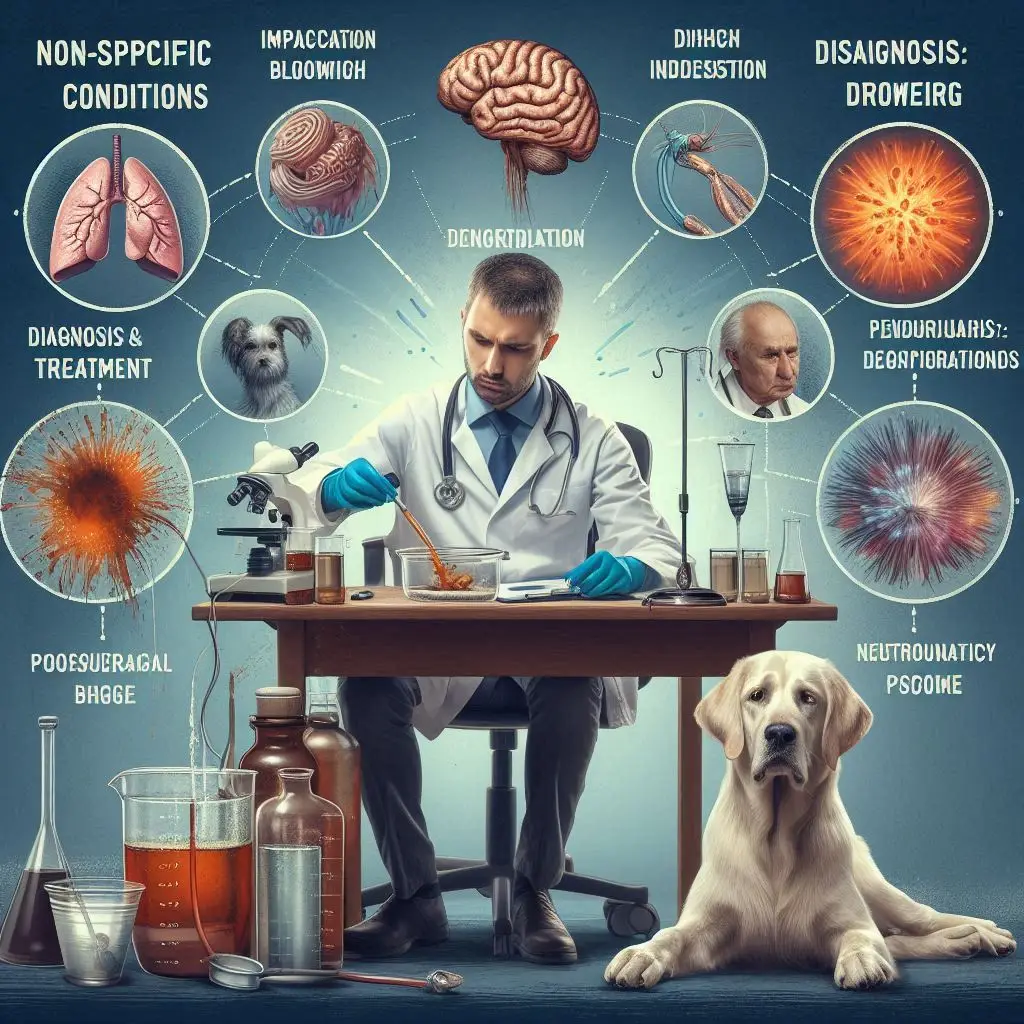Neurotransmitter Metabolites in Animals

Introduction
Neurotransmitter metabolites are crucial for understanding brain function and diagnosing neurological disorders in animals. In particular, metabolites like homovanillic acid (HVA) and 5-hydroxyindoleacetic acid (5-HIAA) serve as important biomarkers in assessing the status of neurotransmitter systems. These metabolites help diagnose conditions such as Parkinson’s disease, serotonin-related disorders, and other behavioral and psychiatric conditions in animals. Monitoring their levels provides valuable insights into neurodegenerative and psychiatric diseases, enabling early intervention and better treatment strategies.
Understanding how these metabolites work and how their levels affect animal health can assist veterinarians in accurately diagnosing and managing diseases related to neurotransmitter imbalances. In this article, we will explore the role of neurotransmitter metabolites in animals, how they are measured, and their significance in diagnosing various conditions.
What Are Neurotransmitter Metabolites?
Neurotransmitter metabolites are the byproducts produced when neurotransmitters, such as dopamine and serotonin, undergo metabolic processes. These metabolites, specifically HVA and 5-HIAA, are excreted in the urine, cerebrospinal fluid, or blood and provide a snapshot of the metabolic activity of neurotransmitters. The levels of these metabolites can be measured through specialized diagnostic tests, giving veterinarians important clues about the health of an animal’s brain function and neurotransmitter balance.
Role of HVA in Diagnosing Neurodegenerative Disorders
Homovanillic acid (HVA) is a key metabolite of dopamine. Dopamine plays a vital role in controlling movement, mood, and various cognitive functions. When dopamine breaks down, HVA is produced. Thus, measuring HVA levels provides insights into the functioning of the dopaminergic system. For instance, low HVA levels are often associated with neurodegenerative diseases, particularly Parkinson’s disease.
In animals, Parkinson’s disease can present similar symptoms to those in humans, including tremors, stiffness, and bradykinesia (slow movement). By measuring HVA, veterinarians can evaluate the extent of dopamine depletion in the brain, helping them make a more accurate diagnosis. Research has shown that low HVA levels can be used to confirm Parkinson’s disease in both humans and animals.
Serotonin Metabolism and the Role of 5-HIAA in Animals
Serotonin is another crucial neurotransmitter involved in mood regulation, appetite, and sleep. 5-HIAA is the primary metabolite produced when serotonin is broken down in the body. Just like HVA in dopamine metabolism, measuring 5-HIAA levels helps evaluate serotonin activity. Abnormal levels of 5-HIAA can indicate several conditions, including serotonin-related disorders, depression, anxiety, and aggression in animals. Read more about neurotransmitter metabolism.
High or low levels of 5-HIAA can signal serotonin imbalances, leading to various psychological and behavioral disorders. For example, lower-than-normal 5-HIAA levels have been linked to aggression in animals, while increased levels may suggest serotonin syndrome, a potentially life-threatening condition caused by excessive serotonin.
How Are HVA and 5-HIAA Measured?
Measuring HVA and 5-HIAA in animals typically involves laboratory tests using urine, blood, or cerebrospinal fluid samples. These tests can be non-invasive and provide quick insights into the metabolic activity of neurotransmitters.
Urine Tests
Urine is the most common sample used to measure neurotransmitter metabolites. Both HVA and 5-HIAA can be detected and quantified in urine samples, providing an accessible way to monitor neurotransmitter activity.
Cerebrospinal Fluid (CSF) Tests
CSF testing, although more invasive, provides the most direct measure of neurotransmitter metabolism in the brain. It is especially useful when diagnosing complex neurological disorders.
Blood Tests
Blood tests are also used, though they may not be as specific as urine or CSF tests. They provide useful data, especially when evaluating systemic conditions.
The choice of testing method depends on the condition being evaluated, as well as the animal’s age, species, and overall health.
Applications in Diagnosing Parkinson’s Disease
Parkinson’s disease, a neurodegenerative disorder caused by the death of dopamine-producing neurons, is not only a human concern but can also affect animals, especially in older pets. In animals, Parkinson’s disease can result in symptoms like tremors, stiff muscles, and difficulty with movement. Measuring HVA in urine or cerebrospinal fluid can provide critical information about dopamine depletion, which is characteristic of Parkinson’s disease.
Veterinarians use these diagnostic tests to identify Parkinson’s disease in animals, track disease progression, and determine treatment plans. Early detection is essential, as it enables the use of medications that can increase dopamine production or alleviate symptoms. Treatment options may include dopaminergic medications that help to restore dopamine balance in the brain.
Diagnosing Serotonin-Related Disorders
Serotonin-related disorders are common in animals, especially those exhibiting signs of anxiety, depression, or aggression. These disorders can result from imbalances in serotonin metabolism, and measuring 5-HIAA levels is an effective way to diagnose these conditions. When serotonin levels are abnormal, they can affect an animal’s behavior, leading to psychological conditions that impact their quality of life.
Animals with abnormal serotonin levels may exhibit aggressive tendencies, anxiety, or mood swings. By measuring 5-HIAA levels, veterinarians can pinpoint the underlying cause of these behavioral changes. Once diagnosed, treatment options typically involve medications that balance serotonin levels, including selective serotonin reuptake inhibitors (SSRIs) and serotonin-norepinephrine reuptake inhibitors (SNRIs).
Advancements in Neurotransmitter Metabolite Testing
As technology advances, so do the methods for testing neurotransmitter metabolites in animals. Newer, more efficient diagnostic techniques have made it easier for veterinarians to accurately measure HVA and 5-HIAA levels. These advances allow for more comprehensive assessments of neurological and psychological health in animals, leading to better outcomes.
Non-invasive testing methods, such as urine testing, have become increasingly popular, as they reduce stress and discomfort for the animal while still providing valuable diagnostic data. The development of portable diagnostic tools also enables veterinarians to conduct tests in the field, providing timely results that can guide treatment decisions.
Conclusion
Neurotransmitter metabolites like HVA and 5-HIAA are essential tools in diagnosing and managing neurological and psychological disorders in animals. By measuring these metabolites, veterinarians can identify conditions like Parkinson’s disease, serotonin-related disorders, and other behavioral issues. This early detection not only aids in accurate diagnosis but also helps improve the treatment and management of these conditions, ultimately enhancing the quality of life for animals.
With advancements in diagnostic technology and a better understanding of neurotransmitter metabolism, the future looks promising for improving animal health and well-being through more accurate and timely diagnoses.
More From Animal Diseases:




Responses